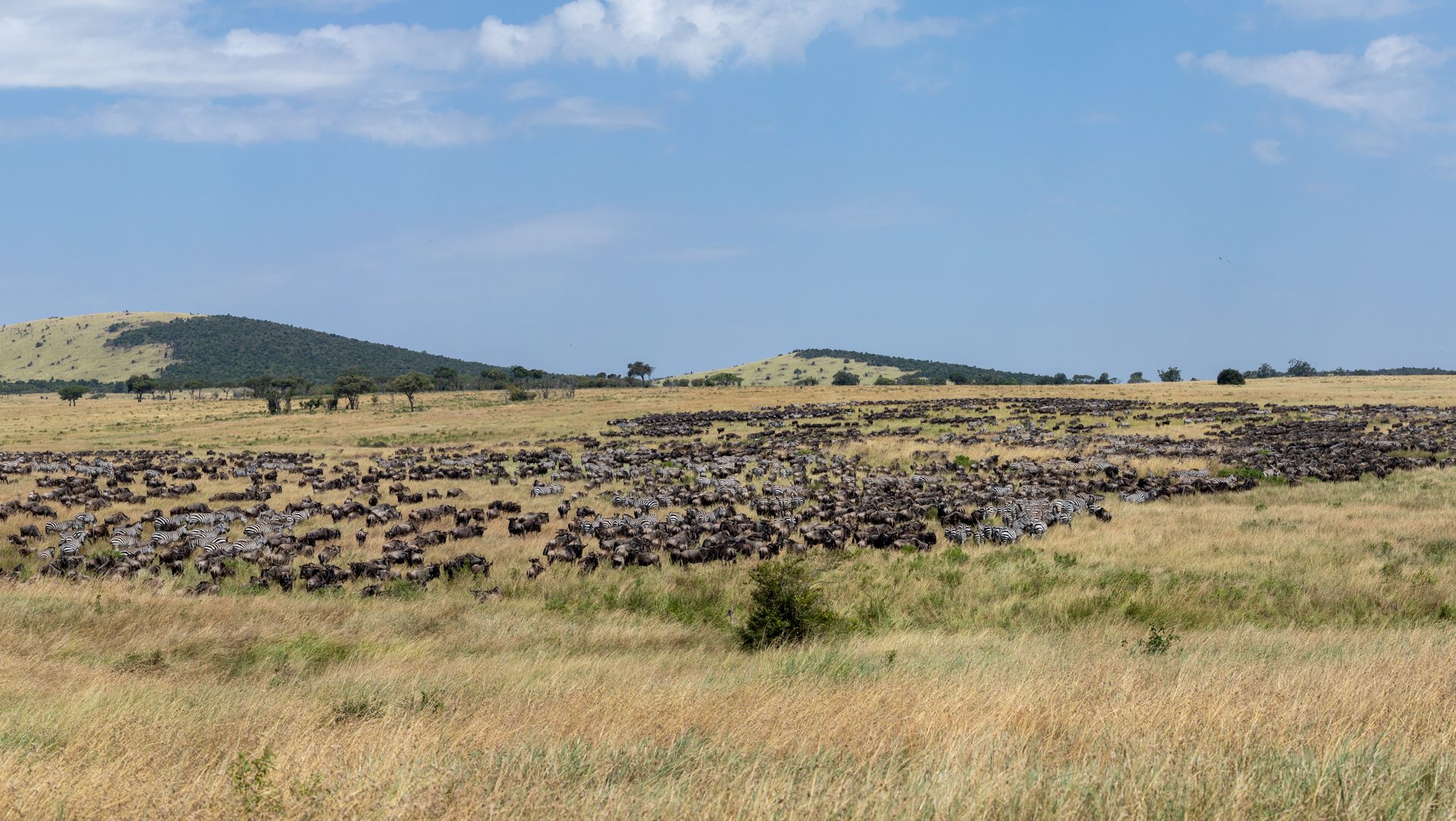
The Great Migration has finally reached our border with massive herds advancing north through the plains. With the larger mega herds yet to arrive, we were treated to a special sighting, sitting in the vehicles amidst thousands of wildebeest and zebra near the Sand River. The air was filled with moans and explosive snorts, a very familiar sound that fills the savannah — and a noisy banquet for predators.
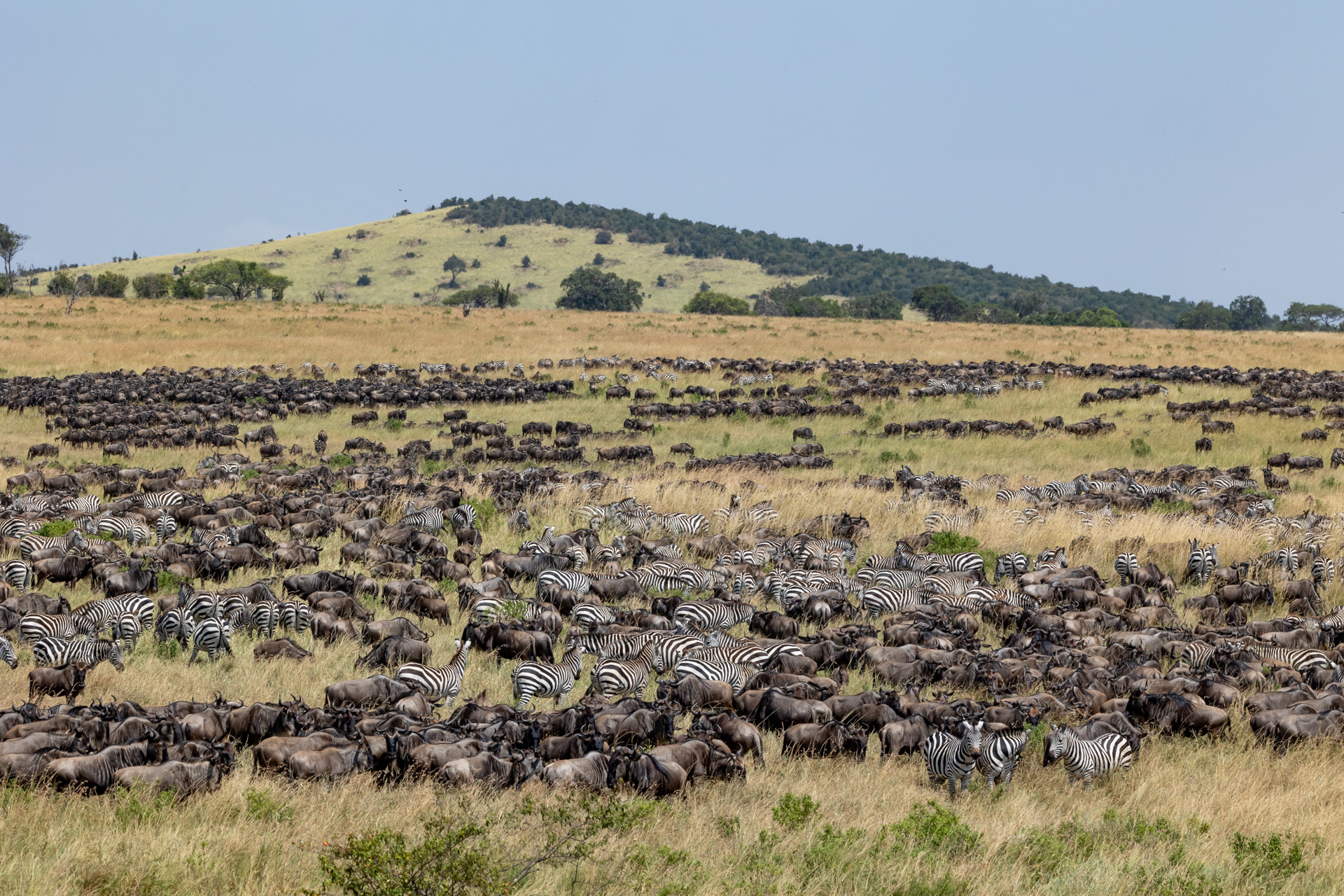
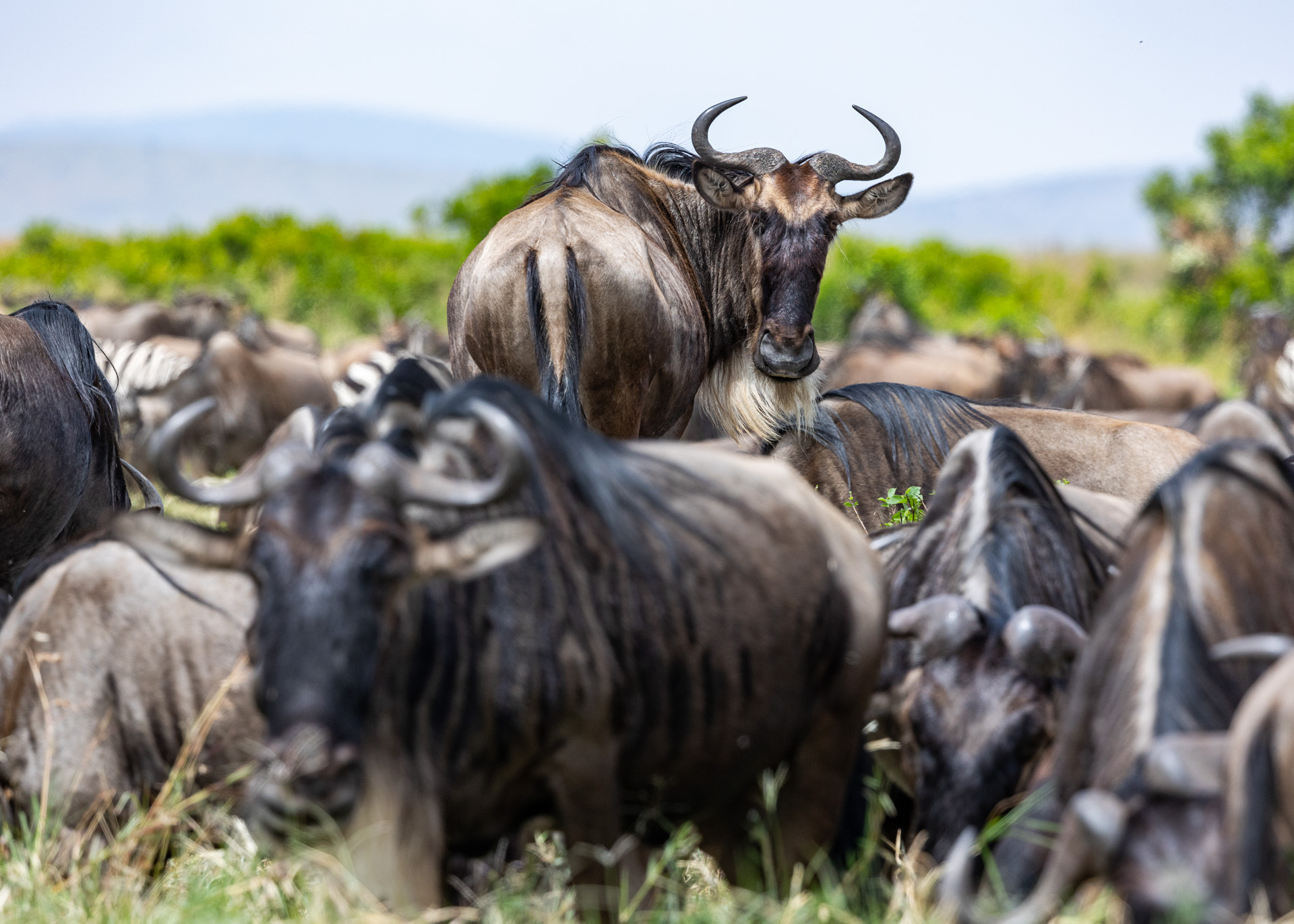

With the migration pouring in, we are experiencing mini river crossings that happen when dazzles of zebra cross the Mara River from the northern conservancies towards the Mara Triangle to join them. In the water, they are not alone. Huge crocodiles have been lying in wait for a year for this very moment. The hippos get agitated by the subsequent chaos and the predators lie in wait for the exhausted zebras to reach the other side. Angama guide Alice, with her guest, arrived to find a huge croc finishing up a striped meal — swallowing the head of a small zebra.


A small group set off to make the mad dash. For the young and inexperienced first-timers, this crossing must be terrifying as the river level is high enough to drown them easily. In fact, the water is very high at the moment and is much higher than it was this time last year. The waters are not the zebras' domain — their hooves and streamlined bodies are much better suited for running and kicking and do nothing to assist their swimming abilities. The crocs, on the other hand, relish in the high waters with their strong massive tails making for the perfect propeller. They easily approach the crossing melee, with mouths open at the ready.
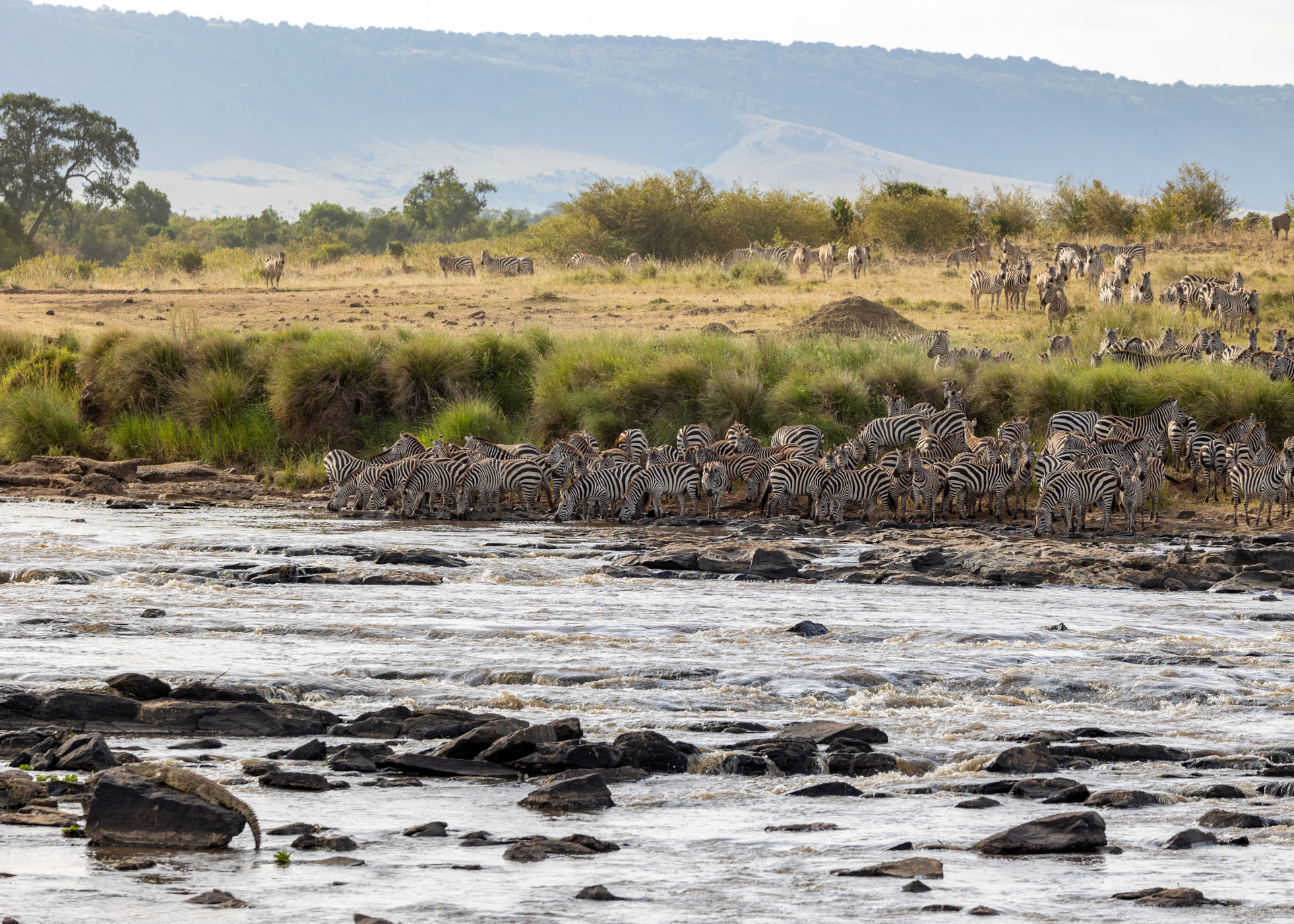

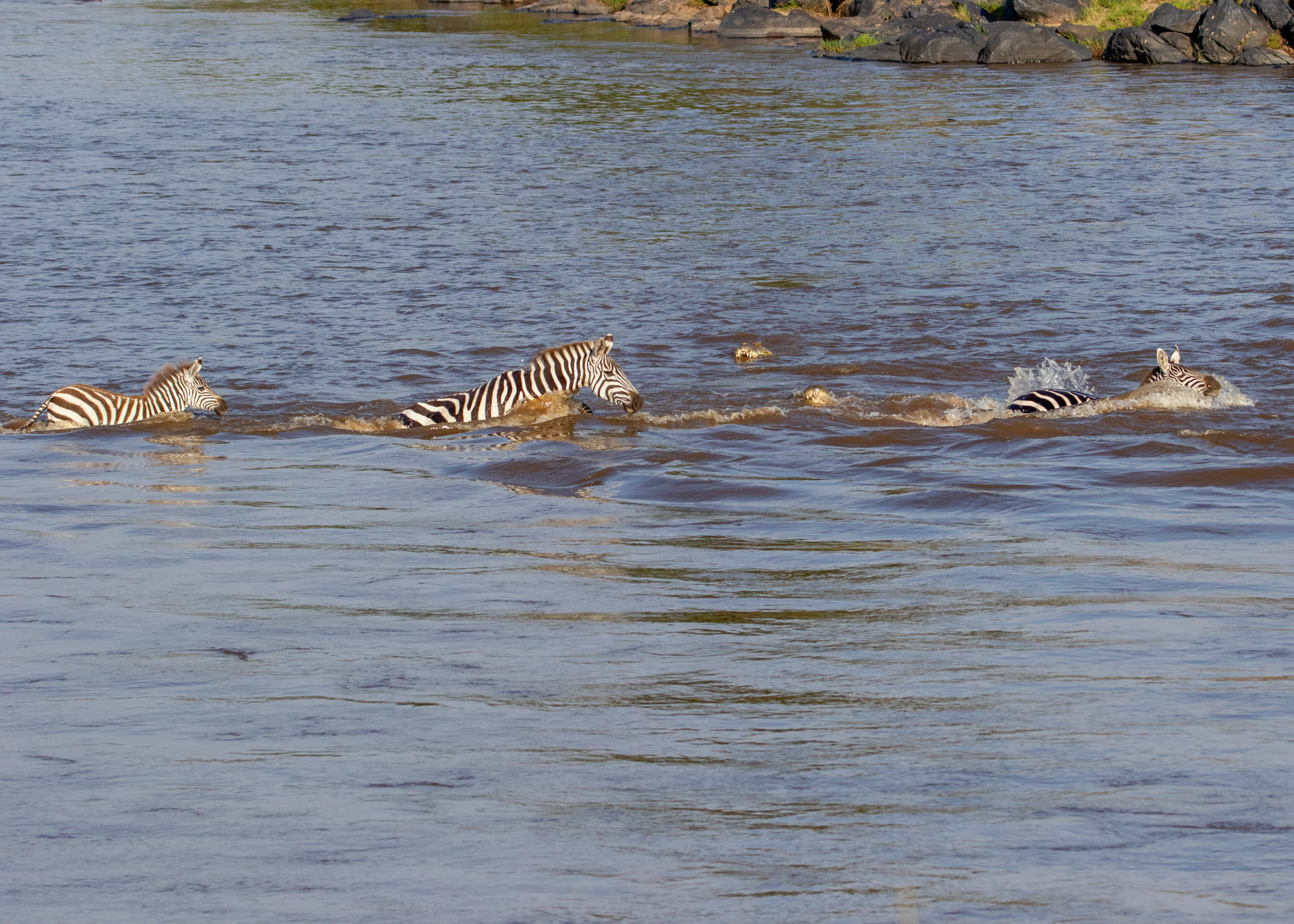
With their heads just above water brandishing a toothy grin, the crocodiles are enough to make a grown zebra scared. One foal in the back looked like an easy target for these powerful reptiles but against all odds, it survived the croc's attempt by the last hair of its tail — and swam safely to the other side, away from the awaiting cat.
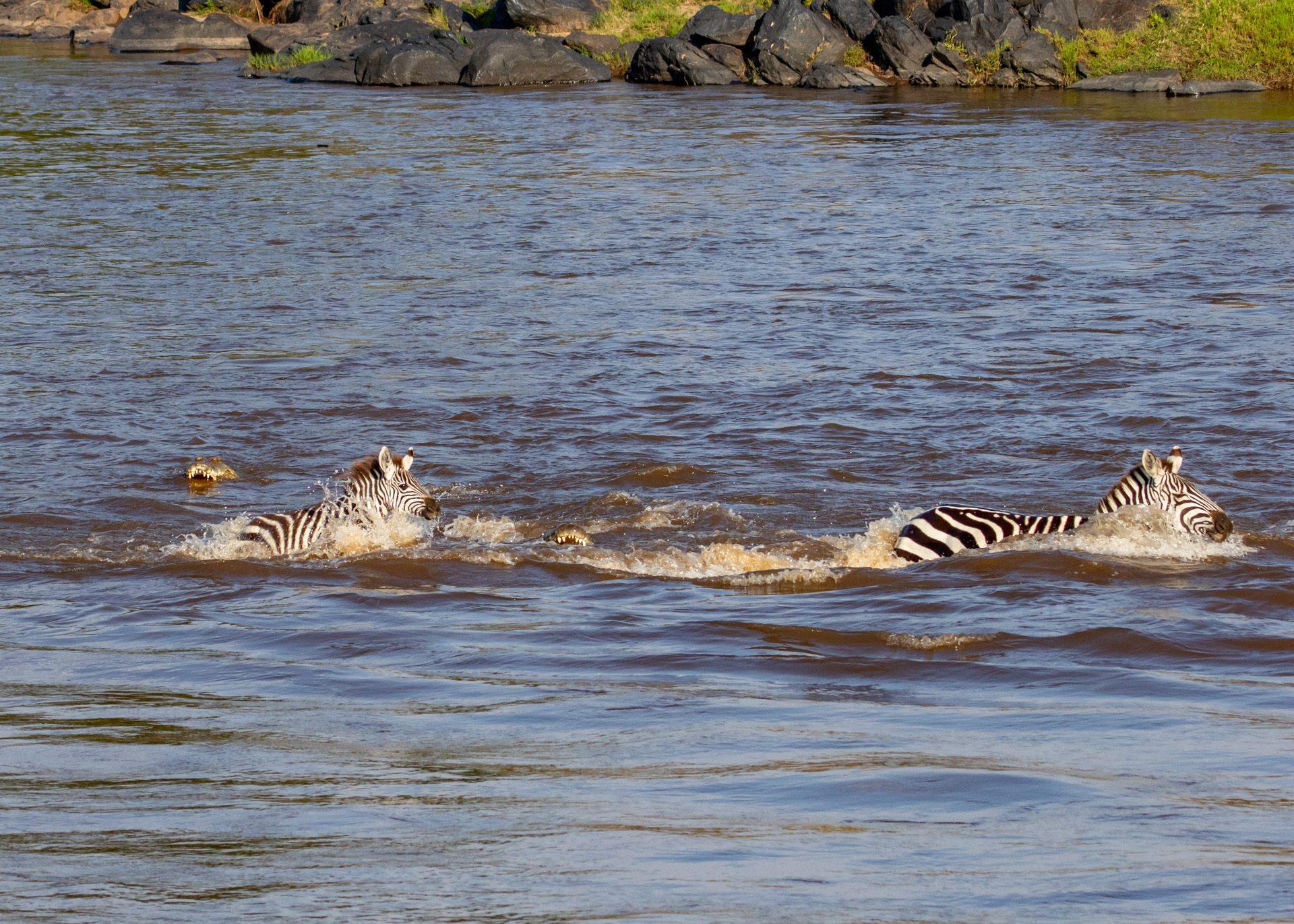
Not far from the Kichwa Tembo Airstrip past the Oloololo gate, a cheetah sauntered through the grass. It was hunting. At first, we watched from a distance as it stalked some larger topi. Once it began running towards them they all scattered quickly escaping in different directions. The ensuing chase led this large male cheetah towards a group of Thomson's gazelle, a common prey for cheetahs. We watched as it slowly inched towards them. Then, with a burst of energy, it sprinted and chased the gazelle into some nearby bushes.


We quickly followed and found that it had already taken down the small Thommy. We identified this cheetah as Mpaka, a lone male from Tanzania that showed up a year ago in July 2022. He has settled in quite well in the Triangle, as you can see.

The seldom-seen side-striped jackal is a medium-sized canid bigger than the commonly seen silver-backed (or black-backed) jackal native to Africa (jackals hold the record for most hyphens). Their back is a darker grey than the underside and the tail is black with a white tip. Indistinct white stripes are present on the flanks, running from elbow to hip. Side-striped jackals are territorial and monogamous, forming pairs that last for life.

The River Pride was stocking up on a hippo meal, also close to the Kichwa Airstrip. Although there was only this female and a juvenile male at the kill, we are fairly certain the rest were hiding in the bush from the heat while these two took their turn protecting the kill.
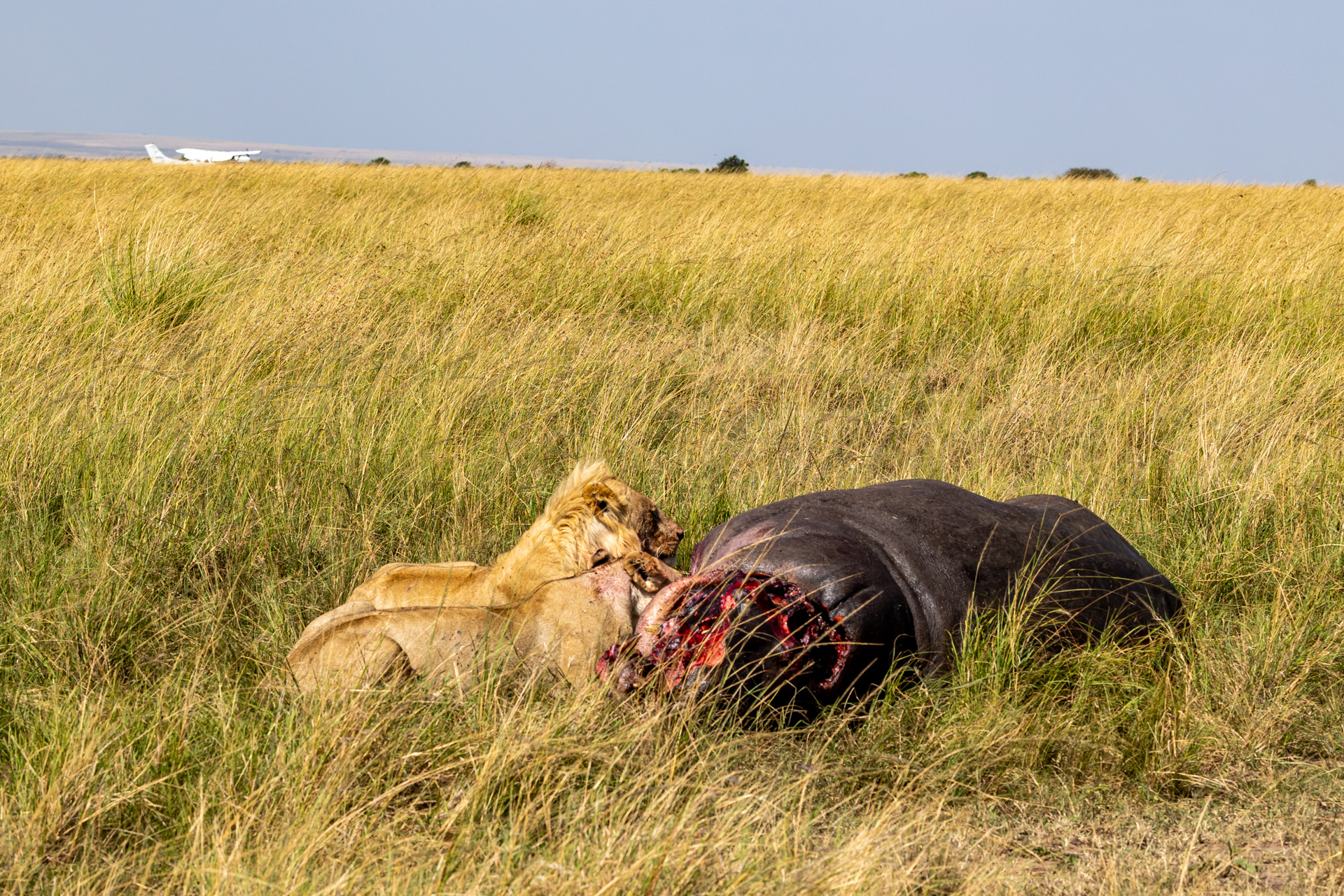


A year ago, Robert captured an image that went viral, demonstrating that some zebras don't go down without a fight.
Filed under: This Week at Angama
Subscribe for Weekly Stories
Comments (1):
4 August 2023
I have always wanted to go to Africa and feast my eyes upon the amazing animals. I’m enjoying your photos and commentary so much.

Out of Africa